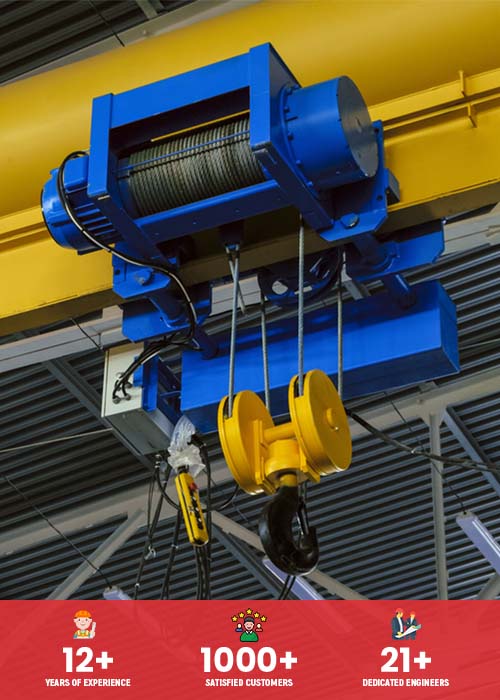Safety Tips for Crane Operators and Workers
Every industry needs cranes since they not only reduce human labour but also save time and money. Imagine what it would be like to work in an industry without cranes. Heavy lifting will require them to endure considerable physical strain while overhead cranes could complete the task in a matter of minutes. Cranes have proven to be one of the most valuable assets for enterprises, and almost every Crane manufacturer in Ahmedabad believes that cranes have fundamentally altered the way that industries operate today.
Although cranes are unquestionably the best thing to have ever occurred to industry, breakdowns or mishaps can result in deadly casualties to both the operators and ground employees. It has been observed in various instances where multiple lives were lost as a result of abrupt crane failures, causing severe economic and psychological damage to the industries. There may be a variety of causes for unexpected crane failures, thus regular maintenance and inspections are necessary to prevent or minimise these failures.
Importance Of Operational Safety For Cranes
Operational Failures occurs when the controller does not stop correctly at zero while parking and the crane does not stop on time. If the driver is inexperienced, he will think that the rapid drop in the load is the result of the brake failure while the incorrect method of manipulating the handle of the controller is the actual cause of the accident. To avoid such failures you must hire an operator who has practical experience in operating cranes and who can quickly identify the root cause of the accident as soon as it happens
There are many things which an experienced crane operator knows and he will apply them before and while operating the crane. When you combine an experienced crane driver with the manual that care manufacturers provide, the chances of operations failures and accidents at the floor are very much minimised. So, the importance of operational safety for cranes cannot be under-valuaed.
Top Crane Operation Safety Tips

- Perform a pre-operational inspection of your crane before every shift
A daily inspection is a user’s or a crane operator’s evaluation of the state of an asset and the surrounding circumstances for safe operation. In many nations, this inspection is mandated by law. When doing the daily inspection, Konecranes CheckApp for Daily Inspections makes it quick and simple to report findings.
- Inspect the rigging gear
According to the above study, load decreases occurred in about 27% of crane accidents, and rigging issues were to blame for 59% of these load dips.
- Check the upper limit switch at the start of each shift
When this switch is functioning properly, the load block is stopped before it can build up and harm the hoist, causing the load to fall.
- Know the location of the power disconnect switch for the runway
This is crucial because if the crane keeps moving down the runway after the operator releases the radio control button, he or she will have time to go to the switch and turn off the power, stopping the crane from running away.
- Always be careful during crane safety operations
Seventy-four percent, or nearly two thirds, of crane accidents take place during normal operations so it is always advised
- Never stand under a load
According to the study, a load swing, load drop, or unstable load was the cause of around 34% of crane accident fatalities and almost 37% of crane accident injuries. Even if there’s a one in 100,000 or one in one million chance that a load may collapse, it’s still not worth the risk.



